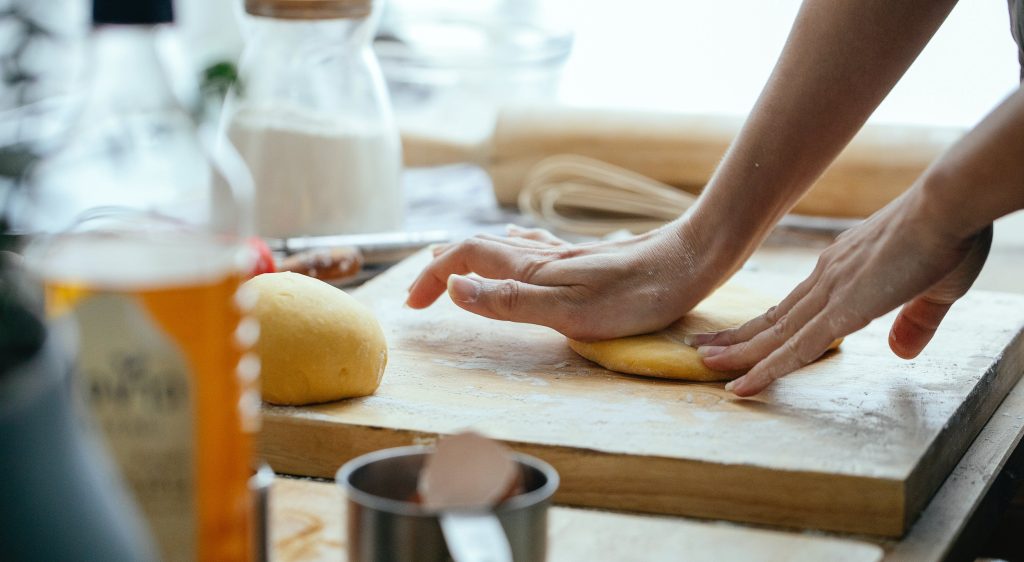The quest for the perfect crusty bread is a journey that requires passion, precision, and a deep understanding of the art and science behind the baking process. Crusty bread, with its golden-brown exterior and satisfying crunch, is a staple that captivates the taste buds of bread enthusiasts worldwide.
As bakery businesses strive for excellence, mastering the secrets behind what makes crusty bread crusty becomes a crucial aspect of success.
In this article, we will look into the key elements that contribute to the coveted crust and explore how bakeries can meet the demands of their discerning customers.
Quality Ingredients are the Foundation
At the heart of crafting exceptional crusty bread lies the foundation of quality ingredients. For consistency, bakeries can source high-quality pre made dough, or must prioritise sourcing premium flour, water, salt, and yeast to ensure the best possible outcome.
The type of flour used, particularly those with high protein content, contributes to the formation of gluten, a protein network that gives the bread its structure.
The choice of water and its hydration level also plays a significant role, influencing the texture and crispiness of the crust. Furthermore, the selection of salt and yeast is crucial. Salt not only enhances the flavour but also regulates fermentation, while yeast contributes to the rising process.
Balancing these ingredients is an art that distinguishes artisan bakeries from the rest, as they meticulously choose and combine elements to create a delicious flavour profile.
The Fermentation Process
The journey to a perfect crust begins with the fermentation process. This step is where time becomes an invaluable ingredient, as it allows the dough to develop complex flavours and textures.
Bakeries should consider implementing long fermentation techniques, such as overnight or sourdough fermentation, to enhance the characteristics of the crust.
During fermentation, the yeast produces carbon dioxide, causing the dough to rise. This process not only contributes to the bread’s structure but also influences the development of the crust.
The slow fermentation of dough allows for the production of organic acids that contribute to the distinct tangy flavour and contribute to the development of a thicker, more robust crust.
Now when it comes to kneading the dough, sometimes less is more. Check out this no-knead bread recipe.
Steam Injection, A Game-Changer
One of the secrets behind achieving a crisp crust lies in the baking environment. Bakery businesses can invest in steam injection ovens, which introduce steam during the initial stages of baking.
This moisture on the surface of the dough delays the formation of a crust, allowing the bread to expand fully before the exterior hardens. Steam injection also promotes caramelization, contributing to the golden-brown colour and rich flavour of the crust.
Temperature and Baking Time
Controlling the baking temperature and time is an art that requires precision. A high initial temperature of around 230°C creates a burst of steam and encourages oven spring, the rapid expansion of the dough in the first few minutes of baking. This initial blast of heat sets the stage for the development of a crisp crust.
As the baking progresses, gradually reducing the temperature ensures the interior of the bread is fully cooked while maintaining the desired crust. The overall baking time is equally critical, as it determines the thickness and hardness of the crust. Achieving the right balance between a crispy exterior and a soft, flavourful interior is the hallmark of exceptional crusty bread.
Post-Bake Techniques
Once the bread emerges from the oven, the journey towards the perfect crust doesn’t end. Allowing the bread to cool on a wire rack helps prevent condensation, preserving the crispness of the crust.
Some bakeries also opt for brushing the baked bread with water immediately after removal from the oven. This technique, known as “retarding,” helps maintain moisture on the surface, preventing premature hardening.
Additionally, some artisan bakers advocate for a short period of “resting” after baking, during which the bread is left untouched to allow the crust to set and the interior to stabilise.
Conclusion
Mastering the craft of crusty bread is a journey worth undertaking. From selecting premium ingredients to fine-tuning fermentation, optimising the baking environment, and using post-bake techniques every step contributes to the creation of a crust that stands out.
Bakeries that embrace the art and science of crafting crusty bread not only satisfy the cravings of their customers but also establish themselves as artisans dedicated to the pursuit of excellence.
